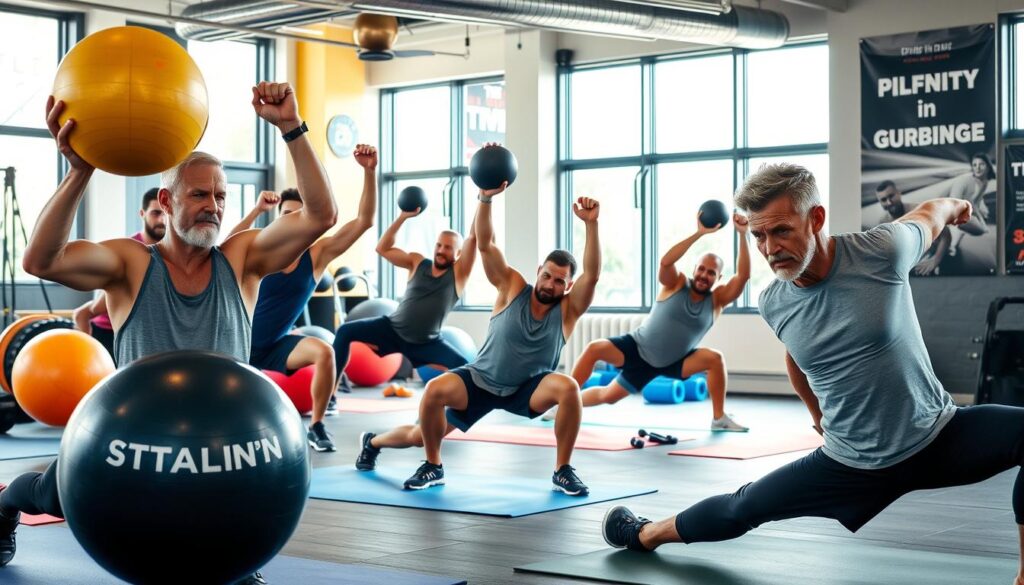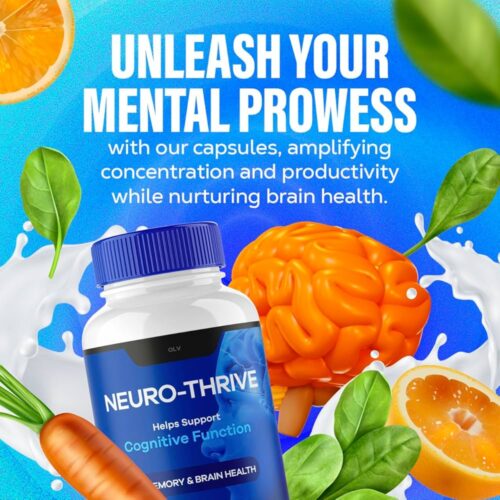As men hit their 40s, keeping a strong core is key for health. This guide covers the best exercises and methods to build a strong midsection. It also helps prevent injuries and boosts fitness safely.
We mix science with practical tips to tackle the challenges men face in their 40s. This way, you can build a strong core and stay stable.
This guide shows why core strength matters, its role in daily life, and how it prevents back pain and injuries. You’ll learn how to build and keep a strong core, perfect for men in their 40s and beyond.
By the end, you’ll have the tools to improve your fitness, stability, and life quality.
Understanding the Importance of Core Strength After 40
As men hit their 40s, keeping a strong core is key for health. The core muscles help stabilize the spine, improve posture, and boost physical performance. These muscles include the transverse abdominis, internal and external obliques, multifidus, pelvic floor muscles, diaphragm, and rectus abdominis.
Impact on Daily Activities and Overall Health
A strong core makes everyday tasks easier. It helps with lifting, bending, twisting, and reaching. A strong core also keeps your posture good, which can help with back pain and prevent injuries.
Connection Between Core Strength and Back Pain
Weak core muscles often lead to low back pain. Studies show that core exercises are better than physical therapy for back pain. Strengthening the core can improve spinal alignment and reduce back problems.
Role in Injury Prevention
A strong core is also key for avoiding injuries. Weak muscles can lead to strains and sprains. But a strong core improves stability and balance, lowering the chance of falls. It also boosts athletic performance by adding power and maintaining form.
Adding core exercises to your workout is crucial for men over 40. It helps keep you healthy, prevents injuries, and improves your life quality. Understanding core strength’s importance lets you take steps to enhance your overall well-being.
Key Benefits of Core Training for Middle-Aged Men
As men get older, having a strong core is key for their health. Core training brings many benefits that can change their lives. It improves stability, balance, and even sexual health, making life better physically and mentally.
Core training boosts stability and balance. A strong core helps men move better and feel more confident. It also lowers the chance of falls and injuries, which are common with age.
Core exercises also help get defined and toned abdominal muscles. In their 40s, men find it harder to keep their midsection flat. Working out the abs, obliques, and lower back can help achieve the desired abs exercises, boosting fitness and confidence.
A strong core is also good for improved sexual health. It’s important for sexual performance and well-being, boosting a man’s confidence and overall well-being. Adding core training to their routine can improve sexual health and energy.
Core training also helps with improved posture and less chronic pain. It strengthens muscles that support the spine, improving posture and reducing back pain. This is especially helpful for men in their middle years.
The benefits of core training for middle-aged men are wide-ranging. It improves stability, balance, sexual health, and posture, reducing chronic pain. A strong core is the base for a more active, confident, and fulfilling life. By focusing on core training, men over 40 can reach new heights of physical and mental health.

Fundamental Core Anatomy and Muscle Groups
The core is more than just the abs. It’s a network of muscles that work together. They help with stability, support, and power. Knowing the core’s anatomy is key for men over 40 to build strong, functional strength.
Primary Core Muscles
The main core muscles are the rectus abdominis, transverse abdominis, and internal and external obliques. These muscles help with movements like bending, twisting, and side bending. They are vital for daily activities.
Supporting Muscle Groups
There are also muscles like the erector spinae, multifidus, and quadratus lumborum in the back. The hip flexors and gluteal muscles are part of the supporting group. Together, they help keep the body stable and balanced.
The Lumbopelvic-Hip Complex
The lumbopelvic-hip complex is key for core stability. It includes muscles in the lower back, pelvis, and hips. Keeping these muscles strong and flexible is crucial for men over 40.
Understanding the core’s anatomy helps men over 40 train better. They can target all important muscle groups. This leads to better strength, stability, and overall health.
Essential Core Stability Exercises
Men over 40 looking to strengthen their core have a few key exercises to focus on. Planks, hollow holds, and bird-dog exercises are top choices. They help tone the core muscles and boost both aerobic and muscular fitness.
The plank is a classic core exercise that works many muscles. Start with 10-15 second holds and aim for 45-60 seconds as you get better. It’s important to keep the right form the whole time. The hollow hold is great for those with back pain. It keeps the back safe while working the core.
The bird-dog exercise is great for hip stability and lower back strength. Other good moves include side planks for the obliques and hip muscles. Reverse crunches target the lower abs and low back. And hip/glute bridges work the lumbopelvic-hip complex.
Remember, the focus is on proper form and quality over quantity. Slow, controlled movements are key to engaging the core. Adding these stability exercises to your routine will help men over 40 build a strong core. This supports overall health and fitness.
Advanced Core Strengthening Techniques
As men get older, keeping a strong core is key. There are more than just crunches and planks to try. These exercises target deeper muscles, boosting stability and strength.
Hollow Body Hold Variations
Learning the hollow body hold is a great first step. To make it harder, add arm or leg movements. Try extending limbs or doing controlled swings. These moves work your core harder, building strong abs.
Plank Progressions
For a challenge, try new plank variations. Single-arm planks and bird-dog planks are good examples. They need more stability and work your core from different angles.
Medicine Ball Exercises
Medicine ball twists are great for rotational strength. Start slow, then speed up as you get better. Other exercises like slams and chest passes also work your core in new ways.
Adding these core workouts, advanced abs exercises, and medicine ball twists to your routine is smart. They help men over 40 build a stronger core. Always focus on form and increase the challenge slowly to avoid injury.
Integrating Core Work Into Your Fitness Routine
Men over 40 need to add core work to their workout routine for a balanced program. The core muscles, including the abdomen, back, and hips, are key for fitness and injury prevention.
To add core exercises, aim for 3-5 specific movements, 3 times a week. Mix up the exercises to train muscles from different angles. This can be done at the start or end of your workout.
Busy men can benefit from workouts that mix core strength with other exercises. Increase the challenge and time of core exercises as you get stronger. Make sure to balance core exercises with cardio and strength training for a complete fitness plan.
| Exercise | Target Muscles |
|---|---|
| Half-Kneeling Woodchop | Transverse abdominis, rectus abdominis, obliques, biceps, triceps, deltoids, rotator cuff, trapezius, quadriceps, glutes |
| Dumbbell Pullover With Leg Lower | Transverse abdominis, rectus abdominis, obliques, deltoids, triceps, rectus femoris, iliacus, psoas |
| Plank Knee-To-Nose | Rectus abdominis, obliques, transverse abdominis, psoas, quadriceps, multifidi, glutes |
| Seated Rollup | Rectus abdominis, transverse abdominis, obliques |
| Glute Bridge March | Glutes, rectus abdominis, transverse abdominis, multifidi, quadriceps |
| Forearm Side Plank | Obliques, transverse abdominis, rectus abdominis, quadratus lumborum, glutes, quadriceps, triceps, deltoids, rotator cuff, serratus anterior, latissimus dorsi |
Adding these core exercises to your fitness goals will improve your workout routine. It helps create a balanced exercise program for better health and performance.

Avoiding Common Mistakes and Injury Prevention
Men over 40 should focus on proper form and technique when strengthening their core. Injury prevention is key, as this age group faces higher risks of muscle and bone issues. These risks come from less muscle and bone density.
Proper Form and Technique
It’s vital to use proper technique in core exercises. Start with lighter weights or bodyweight exercises. Then, slowly add more intensity as you get stronger.
Remember to breathe correctly and avoid holding your breath. This can put too much pressure on your spine.
For those with back pain, try bending your knees slightly during exercises. This can help reduce strain on your spine.
Recovery and Progressive Loading
Recovery is essential in core training. Make sure to rest well between workouts and stretch regularly. Gradually increase the challenge of your exercises over time.
Always listen to your body and adjust your routine if needed. If pain persists, seek advice from a fitness expert or doctor.
Conclusion
Building core strength is key for men over 40. It does more than just look good. A strong core makes you stable, improves your posture, and cuts down on back pain. It also boosts your physical performance and helps prevent injuries.
Understanding your core and doing exercises from simple to hard is important. Adding core workouts to your fitness plan can greatly improve your life and body. This makes you stronger and more capable.
Core training isn’t just for looking good. It’s about setting a strong base for lifelong fitness and healthy aging. Regular core exercises help men over 40 stay strong, flexible, and full of energy. This supports an active and healthy life for years to come.
The benefits of a strong core go beyond looks. They improve your physical health, lower injury risk, and boost your energy and confidence. By focusing on core training, men over 40 can open up new possibilities. They can look forward to a future filled with energy, resilience, and an active, fulfilling life.










